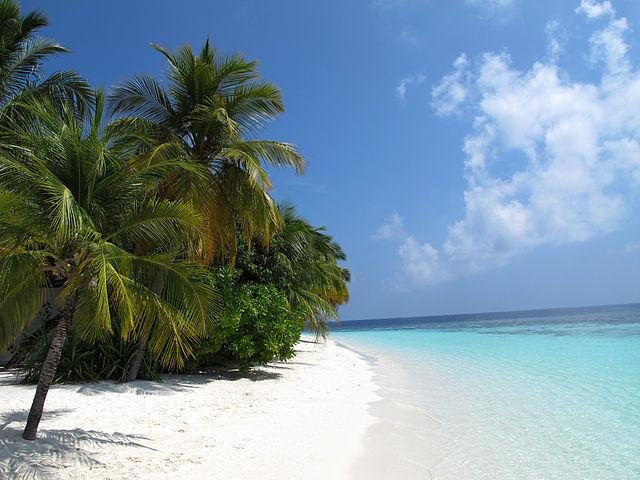Leaders from dozens of countries met in the Maldives on Friday to coordinate efforts on renewable energy development. Photo by
Elite Diving Agency/Wikimedia
Oct. 13 (UPI) -- Small island states and nations with developing economies pledged to take a stronger initiative in the fight against climate change, low-carbon leaders said.
Dozens of government ministers and senior officials met Friday in the Maldives to coordinate efforts on renewable energy development and other ways to stave off the impacts of a changing climate.
"Small island developing nations have been frontrunners in the global drive to scale-up renewables," Adnan Amin, the director general of the International Renewable Energy Agency, said in an emailed statement. "This meeting is further evidence of their collective commitment to strengthen the momentum of the global energy transition as they pursue economic growth, energy security and increased national resilience."
Amin's organization estimates small island developing states, or SIDS, have a total installed renewable energy capacity of about 2 gigawatts, with at least 6 GW in the pipeline. According to IREA, several SIDS have made commitments to reach a 100 percent share for renewable energy in their electricity mix.
One gigawatt of power is the rough equivalent of two coal-fired power plants, or enough to meet the energy demands of around 500,000 homes. Based on 2010 U.S. Census data, 1 GW of renewable energy would meet about a third of the total demand for the U.S. island territory of Puerto Rico.
Debt-strapped Puerto Rico has struggled to recover from a string of hurricanes that swept through the Caribbean in late August and September. The pace of recovery has become a source of frustration for U.S. President Donald Trump, who is working to pull the country out of the Paris climate agreement.
"In the wake of a deadly hurricane season in the Caribbean and at a time when the resolve to tackle the climate crisis has been called into question, small islands are sending the world a clear message: we are seizing the promise of renewable energy to grow our economies today and build a better future for tomorrow," Thoriq Ibrahim, the Maldives Environment Minister and chair of Alliance of Small Island States, said in a statement.
In the Pacific region, the Marshall Islands has a population of about 68,000 spread over 34 low-lying coral atolls, comprising 1,156 individual islands and islets. The average height of the islands is about 6 feet above sea level.
Already, it is experiencing the effects of climate change, mostly from rising sea levels which have caused flooding and inundation of crops. Government officials said that if climate change continues as it is now, there could be 2 million people from the Pacific region who will become refugees.















